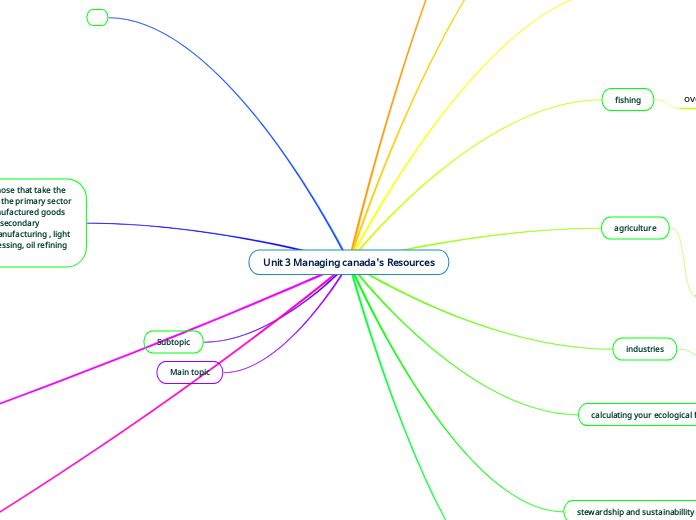Unit 3 Managing canada's Resources
factors affecting industries
power supply.
communications - including transport, telecommunications.
labour supply - including workers with the right skills.
access to market - where the goods are sold.
grants and financial incentives - usually from governments.
raw materials.
secondary industries manufacturing
manufacturing processes are those processes that are done after the initial manufacturing processes—molding, machining production, and so on. As the name suggests, these processes things
forestry
Forestry is the science and craft of creating, managing, planting, using seeds ,and repairing forests, and associated resources for human and environmental benefits. Forestry natural stands. Natural water quality and community protection. do not cut Old Growth Forests. leave it alone
fishing
overfishing
Subtopic
Subtopic
polluting oceans and lakes and ponds.
Subtopic
agriculture
In some places, these practices have led to loss of natural ecosystems, declining diversity and increasing net GHG emissions. There are also problems with soil formation and erosion which limits the ability of soil to hold moisture and provide nutrients to the soil.
industries
i dont know what industries mean
calculating your ecological footpring
is when you are using much stuff i think.
stewardship and sustainabillity
to responsible use and protection of the environment through managing, recycling, conserving, regenerating and restoring and taking responsibility for each individual choice
